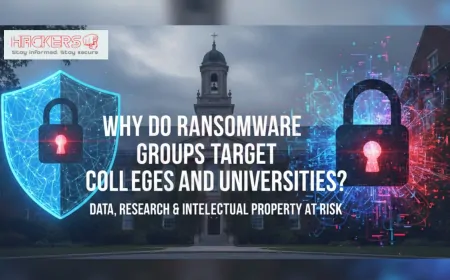How Can You Secure Smart Home Devices From Hackers?
Imagine waking up to find your smart thermostat has turned your home into a sauna overnight, or your security camera is streaming live footage to strangers. Sounds scary, right? In today’s connected world, smart home devices like lights, locks, and voice assistants make life easier, but they also open doors for hackers if not secured properly. The good news is that with a few simple steps, you can protect your home and keep cybercriminals out. This guide will walk you through everything you need to know, even if you’re not tech-savvy.

Table of Contents
- Understanding the Risks
- Use Strong, Unique Passwords
- Secure Your Home Network
- Keep Devices Updated
- Segment Your Network
- Enable Two-Factor Authentication
- Change Default Settings
- Use Encryption
- Set Up a Guest Network
- Monitor Device Activity
- Don’t Forget Physical Security
- Choose Reputable Brands
- Security Checklist Table
- Conclusion
Understanding the Risks
Smart home devices connect to the internet, which means they can be accessed remotely. Hackers love this. They can exploit weak passwords, outdated software, or unsecured networks to gain control. Once inside, they might spy on you, steal data, or even lock you out of your own home. Real incidents have shown baby monitors being hijacked and smart doorbells ringing at odd hours. Knowing these risks is the first step to prevention.
Use Strong, Unique Passwords
Many attacks start with guessing passwords. Default ones like “admin” or “1234” are easy targets. Create passwords that are at least 12 characters long, mixing letters, numbers, and symbols. Avoid using the same password across devices. A password manager can help generate and store them securely.
- Combine unrelated words like “BlueCoffee$2025”
- Never use personal info like birthdays
- Change passwords every few months
Secure Your Home Network
Your Wi-Fi router is the gateway to all your smart devices. If it’s weak, everything connected is at risk. Start by changing the router’s admin password. Use WPA3 encryption if available; it’s the strongest. If not, WPA2 is still good. Hide your network name (SSID) so it doesn’t broadcast publicly.
- Log into your router via its IP address (usually 192.168.1.1)
- Disable remote management
- Restart the router weekly to clear temporary vulnerabilities
Keep Devices Updated
Manufacturers release updates to fix security holes. Ignoring them is like leaving your front door unlocked. Set devices to update automatically when possible. Check manually for others, especially older models.
- Look for a “firmware update” section in the app
- Update during low-usage times to avoid interruptions
- Replace devices that no longer receive updates
Segment Your Network
Not all devices need to talk to each other. Create separate networks for smart devices and personal computers. Many modern routers support VLANs or guest networks for this. This way, if a smart bulb gets hacked, it can’t reach your laptop.
- Use your router’s app to set up IoT (Internet of Things) isolation
- Label networks clearly, like “SmartHome” and “Main”
- Test by trying to access one network from the other
Enable Two-Factor Authentication
Two-factor authentication (2FA) adds an extra step: something you know (password) and something you have (phone). Even if a hacker gets your password, they can’t log in without the second factor. Most smart home apps support 2FA via text or authenticator apps.
- Prefer authenticator apps over SMS for better security
- Set it up for your router and device accounts
- Keep backup codes in a safe place
Change Default Settings
Devices ship with generic usernames and passwords. Hackers know these. Log into each device’s settings and customize everything. Disable features you don’t use, like remote access if you’re always home.
- Check the manual or app for initial setup
- Rename devices to avoid giving away info (e.g., don’t call a camera “FrontDoor”)
- Turn off universal plug-and-play (UPnP) if not needed
Use Encryption
Encryption scrambles data so only authorized devices can read it. Ensure your Wi-Fi and device communications use encryption. Look for HTTPS in app connections and end-to-end encryption in cameras or doorbells.
- Avoid devices that only use HTTP
- Use VPN on your phone when controlling devices remotely
- Check manufacturer privacy policies for encryption details
Set Up a Guest Network
Visitors don’t need access to your smart fridge. A guest Wi-Fi keeps their phones separate. Set a simple password and limit bandwidth if possible.
- Schedule guest access to turn off automatically
- Don’t share the main network password
- Monitor connected devices regularly
Monitor Device Activity
Many apps show logs of when devices were used. Unusual activity, like lights turning on at 3 a.m., could mean trouble. Set up alerts for logins or changes.
- Use apps like Fing to scan your network
- Review logs weekly
- Act fast if something looks off: change passwords and disconnect
Don’t Forget Physical Security
Hackers don’t always need the internet. Someone could tamper with an outdoor camera. Mount devices out of reach and use tamper-proof screws.
- Cover camera lenses when not in use
- Secure routers in locked cabinets
- Use smart plugs with physical switches
Choose Reputable Brands
Not all smart devices are equal. Stick to well-known brands with good security track records. Read reviews and check for regular updates before buying.
- Avoid super-cheap no-name devices
- Look for certifications like ioXt or UL
- Join user forums to learn about real-world issues
Security Checklist Table
| Action | Why It Matters | Difficulty Level | Time Required |
|---|---|---|---|
| Change default passwords | Prevents easy guess attacks | Easy | 5 minutes |
| Enable WPA3 encryption | Secures Wi-Fi traffic | Easy | 10 minutes |
| Set up 2FA | Adds login barrier | Easy | 5 minutes |
| Update firmware | Patches known bugs | Medium | 15 minutes |
| Create guest network | Isolates visitors | Medium | 10 minutes |
| Monitor logs | Spots unusual activity | Easy | Ongoing |
| Segment IoT devices | Limits breach spread | Medium | 20 minutes |
| Use VPN remotely | Protects public Wi-Fi use | Easy | 5 minutes |
Conclusion
Securing your smart home doesn’t require a computer science degree. Start with the basics: strong passwords, updated software, and a secure network. Layer on extra protections like 2FA and network segmentation as you get comfortable. Stay vigilant by monitoring activity and choosing trusted brands. With these habits, you can enjoy the convenience of smart devices without inviting hackers in. Your home’s safety is worth the small effort.
What is the biggest smart home security risk?
Weak or default passwords. Hackers use automated tools to guess them quickly.
Do all routers support WPA3?
No, older models may only have WPA2. Upgrade if possible, but WPA2 is still secure for now.
Can hackers access my camera without internet?
Unlikely if it’s offline, but physical access could allow tampering. Keep devices updated even when disconnected.
Is a password manager safe?
Yes, reputable ones use strong encryption. Choose one with 2FA and a master password you remember.
Should I disable smart features I don’t use?
Absolutely. Unused features can be entry points. Turn off voice recording if you don’t need it.
How often should I change passwords?
Every three to six months, or immediately if you suspect a breach.
Are smart bulbs a security risk?
They can be if connected to the same network as sensitive devices. Isolate them on an IoT network.
Can kids accidentally weaken security?
Yes, by sharing passwords or connecting unsafe devices. Teach them basic rules and use guest networks.
What if my device stops getting updates?
Replace it. Unsupported devices become vulnerable over time.
Is cloud storage for cameras safe?
Generally yes if the provider uses encryption. Check their security policy and enable 2FA.
Do smart TVs need securing?
Yes. Change defaults, update firmware, and avoid public Wi-Fi for streaming logins.
Can I use one app for all devices?
Some platforms like Google Home or Amazon Alexa integrate many, but ensure each device’s individual security.
What’s the easiest first step?
Change your Wi-Fi password to something strong and unique.
Are budget smart devices safe?
Not always. They may lack updates or strong encryption. Research before buying.
Should I worry about voice assistants listening?
They record after wake words, but review privacy settings and delete history regularly.
Can a VPN protect my entire home?
A VPN on your router can encrypt all traffic. It’s advanced but effective.
What if I see strange device activity?
Disconnect it, change all passwords, and scan for malware.
Is it safe to control devices away from home?
Yes, with 2FA, encryption, and a trusted app. Avoid public networks without VPN.
Do smart plugs need strong passwords?
Yes, they control power and can be exploited to cause damage or spy.
How can I tell if my network is secure?
Use tools like router diagnostics or apps that check for open ports and weak encryption.
What's Your Reaction?









































































